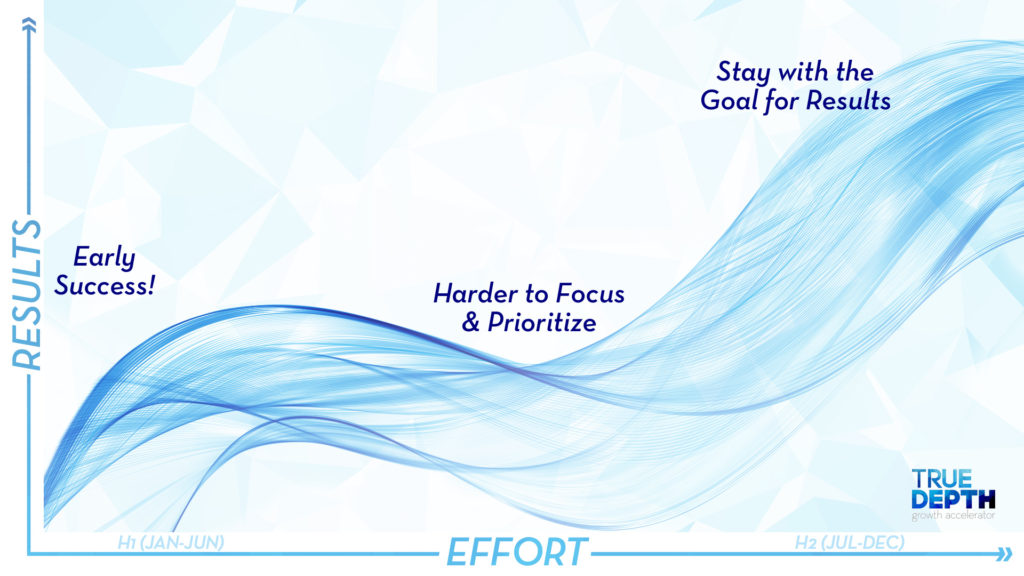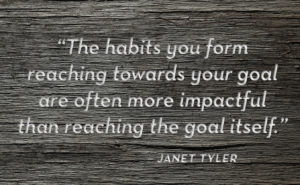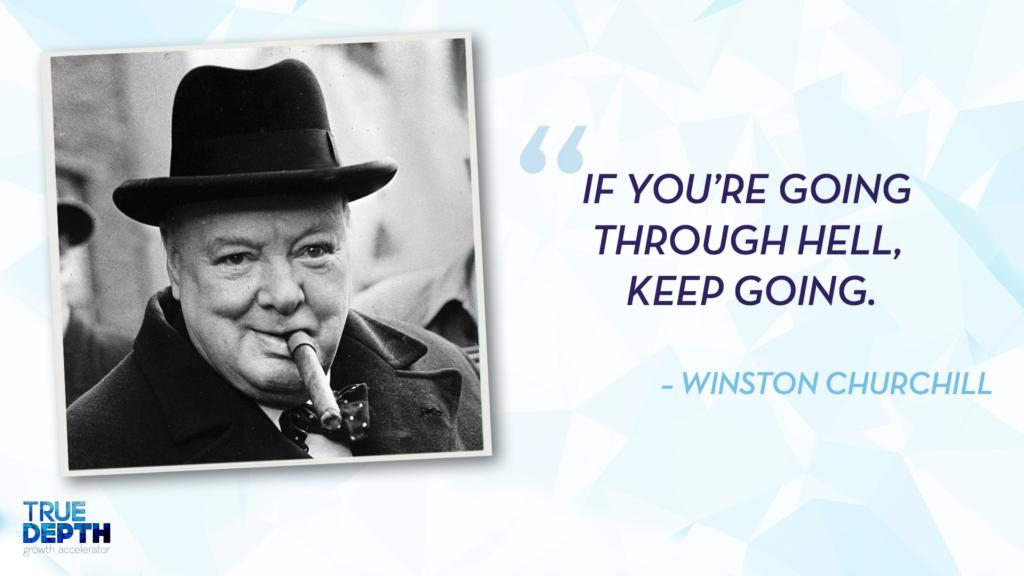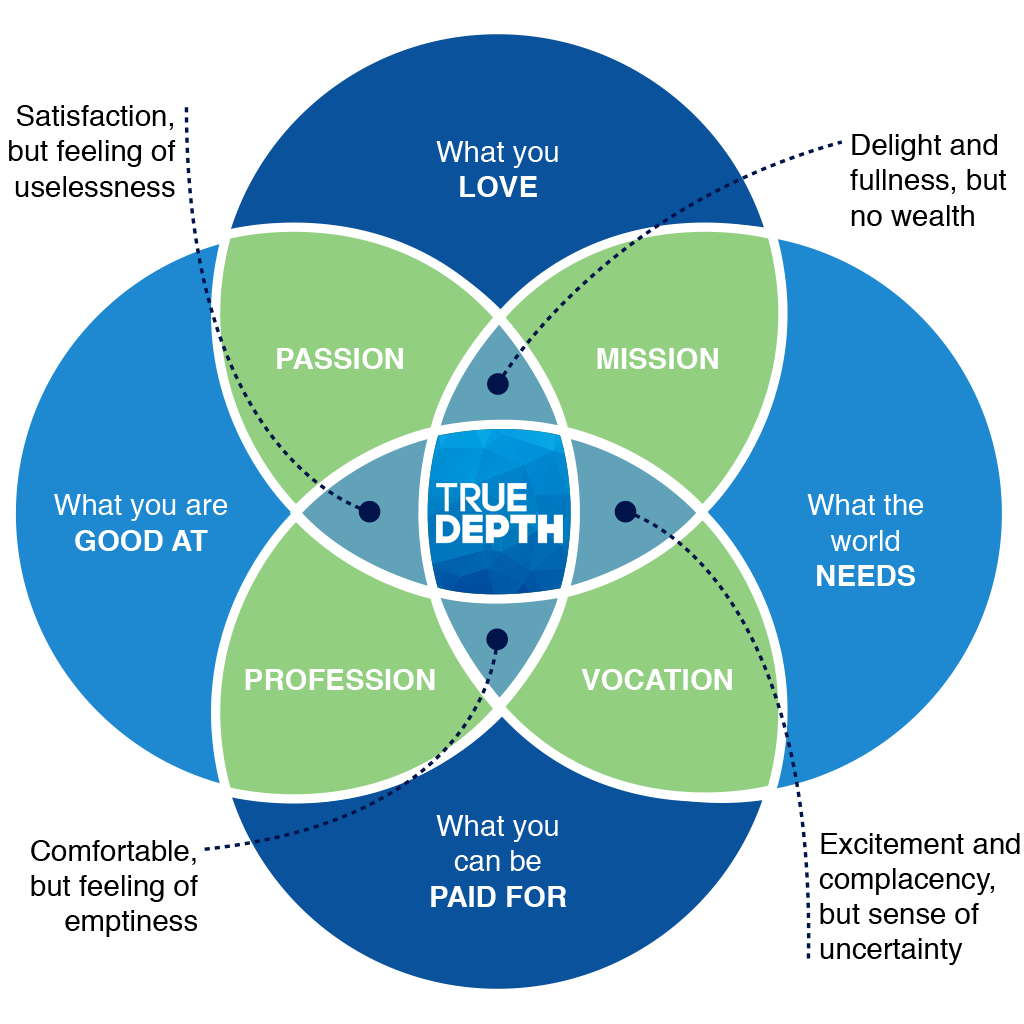“What do you do?” is a standard, accepted opening conversational gambit when meeting new people…
Goal Setting: More Grit, Less Quit
As an executive coach, goal-setting is a significant portion of my work with clients. Midway through the year it sometimes makes sense to change or adjust your goal, but I typically push back strongly with clients who want to give up in the second half (H2) part of the year and abandon their goal.
 Fast Company magazine recently included me in an article on this topic and for those of you that know me, it won’t surprise you that I have some strong opinions on the matter!
Fast Company magazine recently included me in an article on this topic and for those of you that know me, it won’t surprise you that I have some strong opinions on the matter!
This H2 fever of resetting and reframing goals happens around July for a multitude of reasons. Typically, we all have new goals in the new year (new year resolutions). We are focused and often will see some early – quick wins in the first quarter because we are intensely focused and energized around our goals.
In the summer, it’s more challenging to stick to goals. First, we grow tired and weary of the goal we set six months ago. Yes, it’s summer (vacations, kids out of school, target customers harder to reach, etc.) and quite suddenly the goal begins to not make “sense”. Before you simply abandon your goal, ask yourself the hard questions:
- Do you desire to pivot and change your goal because of a mild case of boredom?
- Has it simply become too hard to achieve?
- How did you feel when you were achieving results and success back in March?
- Do you think the goal has become unattainable? Why? Why not?
- Have your interests simply changed over the past few months?
- What new and beneficial habits have you formed as a result of trying to reach your goal?

I typically draw a similar chart for clients and ask them, where they think they are on the chart. Staying with a goal for 12 months or longer requires a ton of discipline and effort – and much of the effort happens in the second half of the year. In fact, the effort has to nearly double to reach that goal in the last six months of the year. Ideally, a good coach will stay with the client to keep their energy and hold them accountable for maintaining a high level of effort to reach a goal.
In reality, sticking with goals and maintaining a commitment for the whole year is when you get the full picture whether or not your efforts are truly working.
 If you are feeling discouraged because it appears you won’t achieve the goal you set back in January, try not to focus win or lose only. Remember, the habits you form reaching towards your goal are often more impactful than reaching the goal itself.
If you are feeling discouraged because it appears you won’t achieve the goal you set back in January, try not to focus win or lose only. Remember, the habits you form reaching towards your goal are often more impactful than reaching the goal itself.
Let’s say you set a revenue goal for your business or division six months ago and perhaps it appears you won’t hit that target before the end of the year. Take a moment right now and build a list of new, beneficial habits you formed as a result of attempting to reach that goal. Some of these habits could be:
- An enhanced sales culture where all team members are participating in the sales process
- Rigorous financial reporting that include pipeline size, close ratios, and other important metrics
- A new CRM system implementation like SalesForce or Microsoft Dynamics
- LinkedIn social selling training for all salespeople
These are some pretty powerful habits! I sometimes go so far as to say, it doesn’t matter whether you obtained the goal or not because you have changed for the better as a result of having the goal in the first place! Don’t give up on your goal. Focus on the habits and retrench with your team. In the end, you may bring down your revenue goal, but certainly, don’t forget or toss aside what you’ve learned with these new and powerful habits along the way.
I’m not trying to go full-on Churchill here but most people give up on their goals way too soon. They feel they need to pivot at the time when they should be focused and stick with it.


